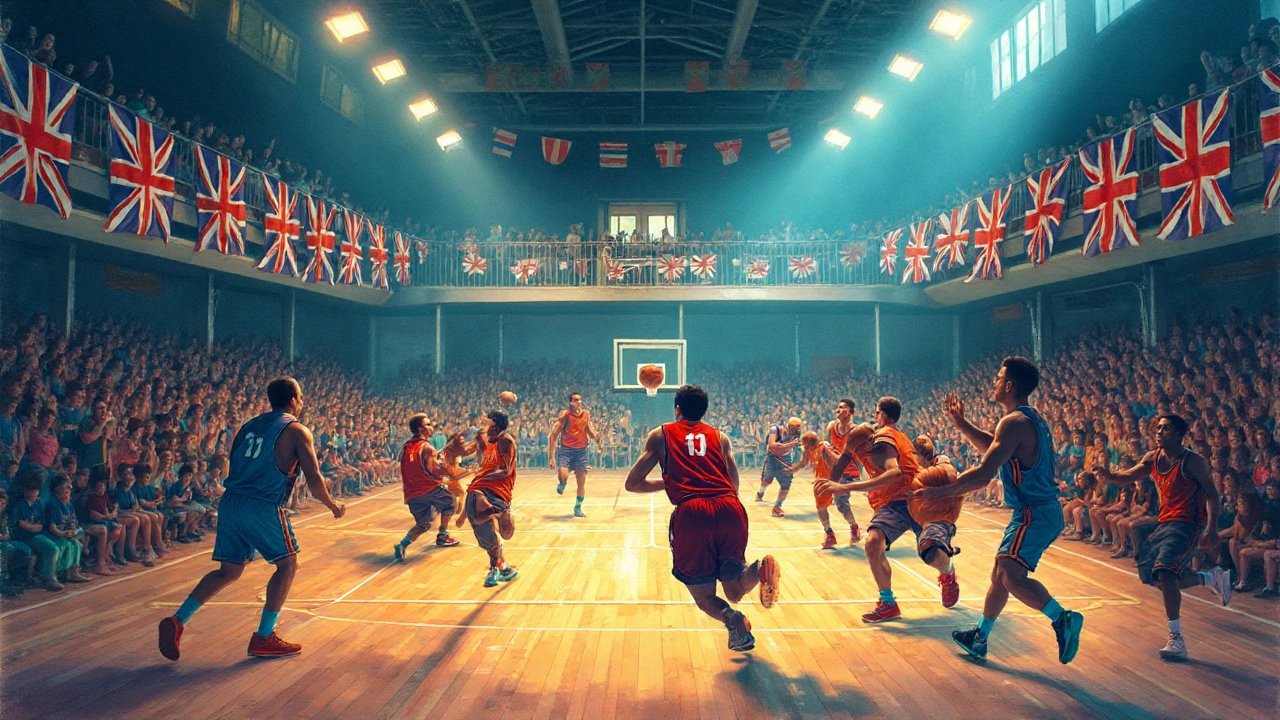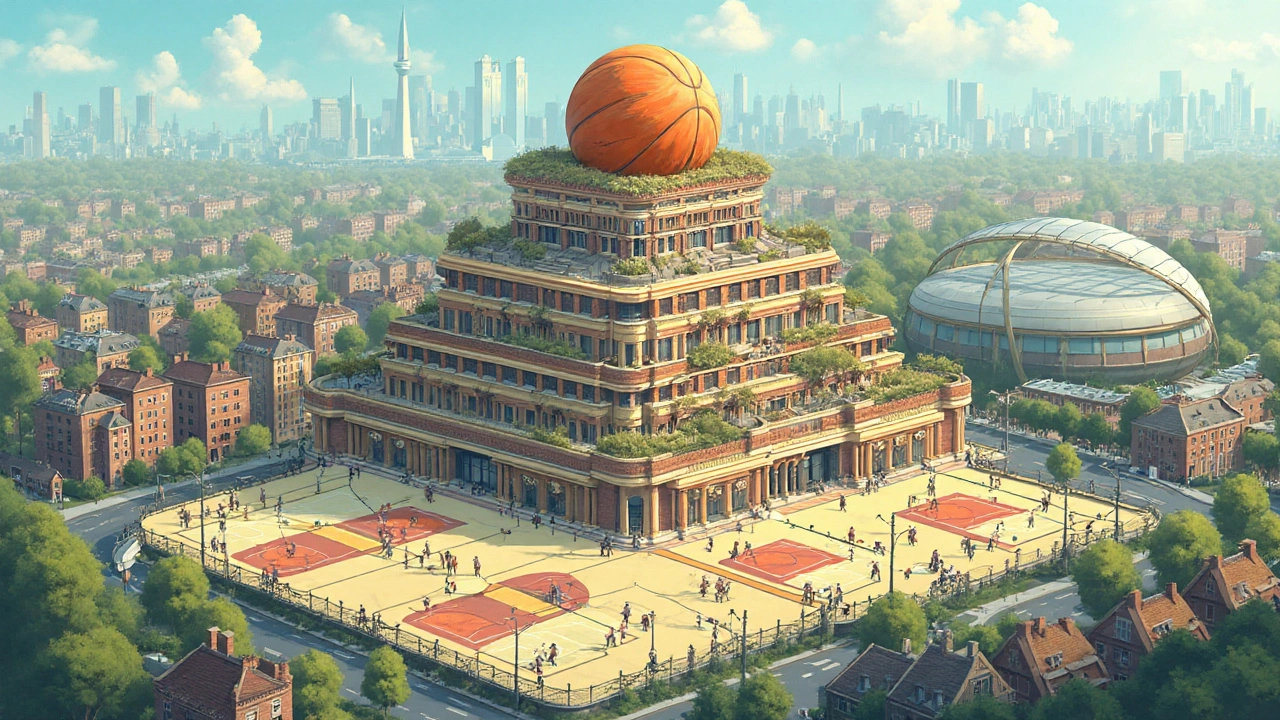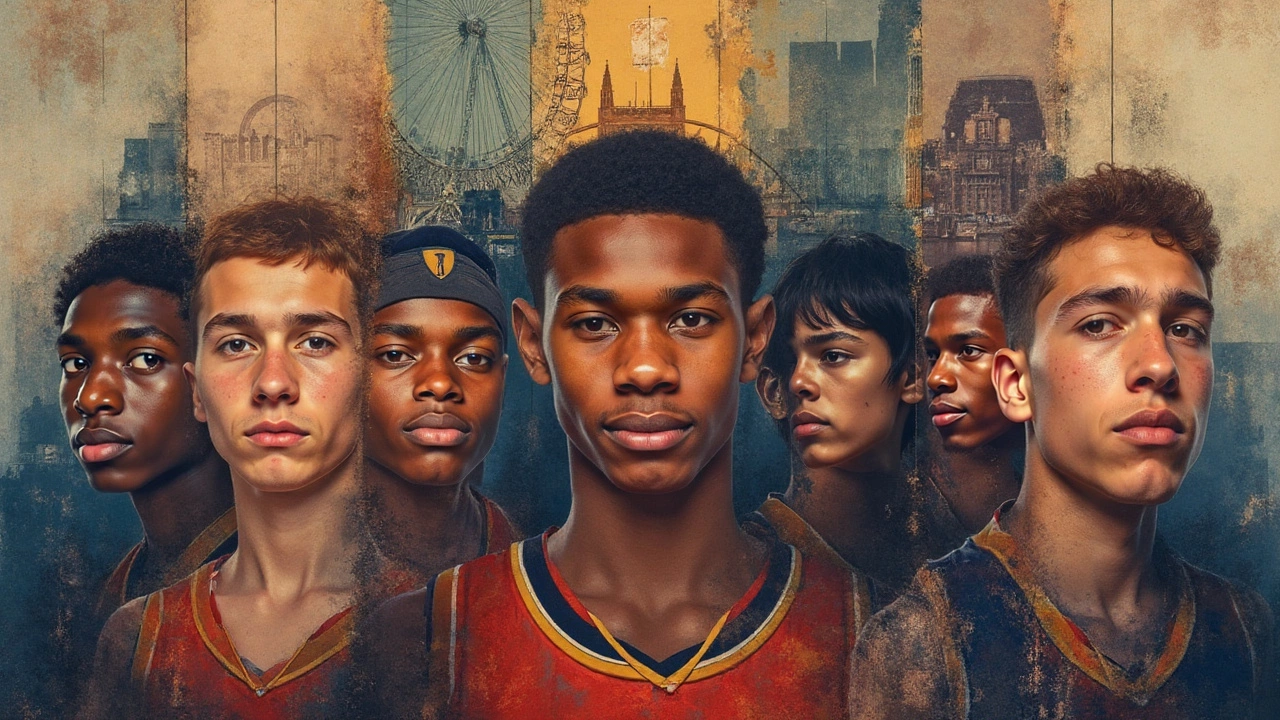What League Is Below The BBL? Basketball's British League System Explained

England's top basketball teams might get most of the glory, but the structure under the British Basketball League (BBL) is where the grind really happens. Most casual fans have heard of the BBL—think London Lions, Leicester Riders, and Newcastle Eagles lighting up Friday nights. Still, if you dig just beneath that surface, another world opens up. Hundreds of teams and thousands of players sweat it out in leagues that don’t get national TV coverage, but these levels are the beating heart of British basketball.
Understanding the BBL: The Pinnacle of British Hoop Dreams
The British Basketball League (BBL) heads the English (and Welsh and Scottish) basketball pyramid. Launched in 1987, the BBL is fully professional. Teams like the London Lions chase titles and shot-clock buzzer-beaters, but you won’t see promotion or relegation here—a big difference to how most UK sports stack up. The BBL works on a franchise model, not unlike American professional leagues. Entry isn’t tied to on-court results lower down; it’s about financial investment, facilities, and an application being accepted by the league. Right now, there are 10 clubs in 2025, usually clustered in big cities, playing a regular season, knockouts, and a showpiece playoff final that still pulls decent crowds.
Players in the BBL are all paid—some earning full-time wages, others part-time on the bench. Imports from Europe, the US, and, lately, even Africa and Oceania spice up the action. TV deals have gotten fatter (Sky Sports renewed coverage in 2022), and game attendances average around 1,200 per match, with peaks at Cup and Finals. Sponsors—like Molten for balls and official kits by Kappa—are front and centre. With money and talent growing, the BBL is getting closer to the UK’s ‘big four’ sports, but there’s still a gulf.
Below the BBL, the structure is where things get complicated but also exciting. This isn’t just a feeder system for the top league. For most teams, it’s a proving ground, a community hub, and a springboard for local talent hoping for their shot at the big time.
Meet the National Basketball League: Life Just Below the BBL
So, what’s right under the BBL? The answer: The National Basketball League (NBL). Established way back in 1972 (even before the BBL), the NBL is the official second tier in England—but it’s also where the ecosystem branches out. The NBL isn't just one division: by 2025, it has four divisions, and it’s run by Basketball England, the sport’s official governing body. Division 1 is the highest tier below BBL, followed by Divisions 2, 3, and 4. Each division has North and South splits at Divisions 2 and below, covering regions and reducing travel costs for clubs.
Here’s the big thing: while NBL Division 1 is technically the second tier, the gap between it and the BBL is more than just on the scoreboard. There’s no official promotion or relegation—and the funding gap is enormous. Division 1 NBL teams might have paid players or semi-pros, but plenty rely on local sponsors, volunteers, and ticket sales barely enough to cover court hire and referees’ fees. Teams like Hemel Storm, Derby Trailblazers, and Reading Rockets have been the standout names in recent years.
Want numbers? Have a look at this:
| League/Tier | Number of Teams (2025) | Average Weekly Attendance | Player Payment Status |
|---|---|---|---|
| BBL (Tier 1) | 10 | 1,200 | Fully Professional |
| NBL Division 1 (Tier 2) | 14 | 400 | Semi-Pro/Amateur |
| NBL Division 2 (Tier 3) | 24 | 200 | Amateur/Student |
| NBL Divisions 3 & 4 (Tier 4+) | ~60 | 50–100 | Amateur/Volunteer |
In short, if you’re asking “what league is below the BBL?” it’s NBL Division 1. Don’t expect NBA-level razzmatazz, but the passion is fierce, and the gyms are full of future BBL hopefuls, veteran players, and die-hard fans desperate for victory on a budget. Most coaches, staff, and even club owners here volunteer their weekends and evenings to keep things running.

Promotion, Relegation, and Getting Into the BBL
Here’s where UK basketball trips people up: unlike football or rugby, there’s no automatic movement between the BBL and the NBL. You can win every game at NBL Division 1, but you won’t get promoted just for those results. Getting into the BBL is about much more than skill alone. It's a franchise system. You need financial backing, the right facilities, stability, and a community following to get a seat at the top table. Each BBL team is assessed against strict criteria—think of it like trying to buy into an exclusive club rather than just winning a league.
The last team to make the jump like this was the Plymouth City Patriots in 2021. Even though their roster was competitive, they needed deep pockets, a venue up to standard, and a long-term plan for financial sustainability. Sometimes, very successful NBL Division 1 clubs decide not to apply, simply because the costs are eye-watering compared to their normal budgets.
Within the NBL, there is normal promotion and relegation between Division 1 down to the regional leagues. Finish top and you move up; flop to the bottom, and you head down. It keeps the leagues competitive, with everything to play for right until the last week of the season. Many of the country’s top young players (think 18-21-year-olds fresh out of the Basketball England Academy) make their senior starts in Division 1 or 2—hoping to catch a scout or agent’s eye. Others use strong seasons at this level to win full scholarships to universities in the States, following the dream by a different route.
The main takeaway? If you support a club in Division 1, you can dream big. Just know that the climb up to the BBL brings extra headaches—mainly financial and logistical ones. The gulf isn’t simply about results; there are business risks involved that even the bravest teams need to think about.
Who Plays in the NBL? The Clubs, The Stars, The Hopefuls
NBL teams cover pretty much every corner of England (plus the odd Welsh and Scottish side in special cases). Most are community-focused, with hard-working coaches juggling day jobs and young players mixing studies, work, and sport. You won’t see big names like you do in the BBL, but if you’re hungry for basketball culture, these games are gold. Hemel Storm—Division 1 champions twice since 2020—play in a gym way smaller than any BBL arena, but still pack in fans every Saturday. Derby, Reading, and Thames Valley Cavaliers have made the league ultra-competitive, peppered with a few American imports on tryouts, and a lot of home-grown, gritty players with chips on their shoulders.
These teams are super-connected to local schools, colleges, and junior clubs. A Division 2 or 3 game is full of teenage lads and girls who want a selfie with their town's sharpshooter. There have been endless stories of NBL players crossing into the BBL on injury cover or short-term deals, then never looking back. League winners get a bit of cash for their efforts, but more importantly, get respect—and a platform for players to build careers, on or off the court.
Those aiming to break in should know: trials are open and inclusive. Lots of clubs advertise tryout dates every summer, looking for hidden gems. Even if you don’t get into the top team, lower squads feed the system with non-league, university, and even wheelchair basketball options. Diversity is huge—it’s normal to see more than ten different nationalities in a single Division 1 game. The atmosphere? Think rowdy, close-up, and passionate. Imagine flirting with a buzzer-beater on a freezing February night, then heading to a local chippy after a win—honestly, that’s British basketball.

What’s Next for British Basketball’s League Pyramid?
Things are changing, slowly but surely. There have been consistent rumours about linking NBL Division 1 and the BBL more closely. Basketball England and the BBL Board have talked about introducing a formal pathway, even promotion-relegation. But every time, the finances and venues slow things down. The dream? That a Cinderella club from Division 1 could one day rise up and shake the BBL, much like Luton Town did in football or Exeter Chiefs in rugby.
There’s fresh investment in grassroots basketball. Some BBL teams now have development squads in the NBL Division 1—London Lions II, for example, who play against and develop with other semi-pros. It lets talent get tested under pressure but closer to home. Schools programmes are also expanding. After a record 75,000 kids took part in Basketball England’s official junior programme in 2024, the pipeline of talent is the strongest it’s ever been.
Streaming is changing the game, too. You can watch almost every NBL Division 1 fixture live or on-demand, on the Basketball England YouTube channel. So if you want to spot the next British star—or just see your local team scrap for a playoff place—it’s literally at your fingertips. This exposure is already translating into better sponsorship opportunities, more media attention, and new fans. Clubs are encouraged to focus on local identity, and there’s now a real pride in turning out to see Bristol Flyers II or Newcastle University instead of trekking cross-country.
So, if you love basketball and you’re in the UK, don’t just stick to the top-tier showdowns. Give the NBL a chance. There’s probably a match near you next weekend—where the action is rough, real, and just a little bit wild.
